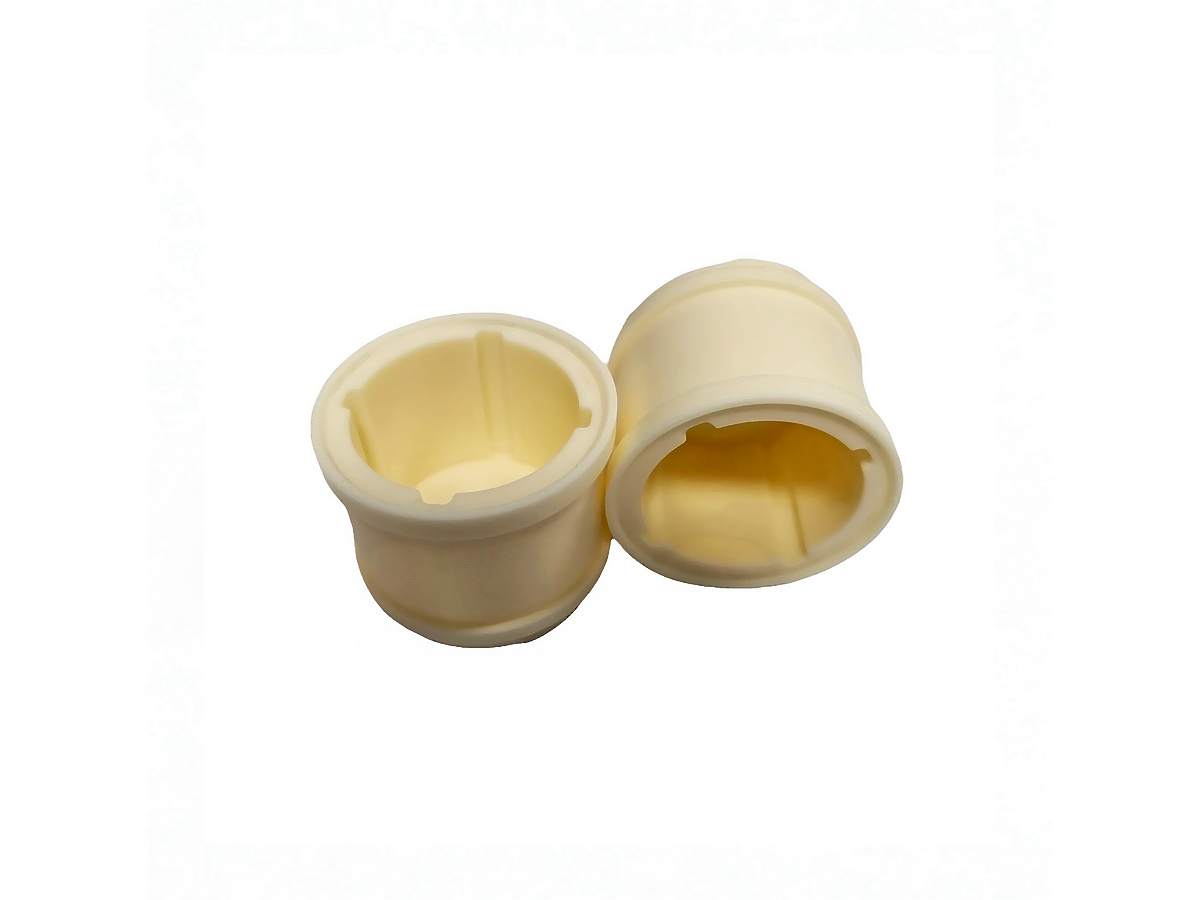CNC Rapid Prototyping of Ceramic Components for Precision Parts in Extreme Environments
Introduction
CNC rapid prototyping of ceramic components provides manufacturers with an advanced, precise method for creating high-performance parts suitable for extreme environmental conditions. Ceramics such as Zirconia (ZrO₂), Alumina (Al₂O₃), Silicon Nitride (Si₃N₄), and Silicon Carbide (SiC) are renowned for their exceptional hardness, high temperature stability, and superior chemical resistance. Industries, including aerospace, nuclear, medical, and semiconductor manufacturing, increasingly rely on advanced machining technologies, such as Ceramic CNC Machining, to rapidly produce complex prototypes with extremely tight tolerances (±0.003 mm accuracy).
Leveraging Rapid CNC Prototyping significantly accelerates ceramic component development cycles, allowing precise validation and refinement of designs under harsh operational conditions before transitioning to full-scale production.
Ceramic Material Properties
Material Performance Comparison Table
Ceramic Type | Hardness (HV) | Flexural Strength (MPa) | Thermal Resistance (°C) | Density (g/cm³) | Applications | Advantages |
|---|---|---|---|---|---|---|
1250–1350 | 900–1200 | Up to 1000 | 6.0 | Medical implants, structural components | High strength, fracture toughness | |
1500–1800 | 300–600 | Up to 1750 | 3.9 | Semiconductor components, electrical insulators | Excellent electrical insulation, high wear resistance | |
1400–1600 | 700–1000 | Up to 1200 | 3.2 | Aerospace bearings, turbine parts | Superior thermal shock resistance, wear resistance | |
2200–2800 | 350–600 | Up to 1650 | 3.2 | Semiconductor substrates, armor plating | Exceptional hardness, thermal conductivity |
Selecting the Right Ceramic Material
Choosing the appropriate ceramic material for CNC rapid prototyping depends on specific environmental demands, thermal performance, mechanical strength, and application:
Zirconia (ZrO₂): Preferred for structural and biomedical applications requiring exceptional strength (up to 1200 MPa flexural), toughness, and biocompatibility.
Alumina (Al₂O₃): Ideal for high electrical insulation and wear-resistant components used in semiconductor manufacturing and electrical industries due to hardness values exceeding 1500 HV.
Silicon Nitride (Si₃N₄): Recommended for aerospace and automotive applications due to its exceptional thermal shock resistance and high mechanical strength (up to 1000 MPa).
Silicon Carbide (SiC): Optimal for extreme temperature and wear-resistant applications requiring extraordinary hardness (up to 2800 HV) and superior thermal conductivity.
CNC Machining Processes for Ceramic Components
CNC Process Comparison Table
CNC Machining Process | Accuracy (mm) | Surface Finish (Ra µm) | Typical Uses | Advantages |
|---|---|---|---|---|
±0.005 | 0.4–1.2 | Complex structural ceramics, precision components | Versatile, high-precision shaping | |
±0.005 | 0.4–1.0 | Rotationally symmetrical parts, bushings, bearings | Precise cylindrical accuracy, consistent finish | |
±0.002 | ≤0.2 | High-precision seals, bearings, valves | Superior surface finish, extremely tight tolerance | |
±0.003 | 0.2–0.8 | Complex aerospace components, detailed prototypes | Excellent accuracy, intricate geometry capability |
CNC Process Selection Strategy
Selecting an effective CNC machining process for ceramic prototyping depends on part complexity, surface finish requirements, precision standards, and time efficiency:
CNC Milling: Ideal for detailed structural ceramic parts needing precise shaping with tolerances of ±0.005 mm, suitable for prototypes requiring complex geometries.
CNC Turning: Optimal for ceramic components with rotational symmetry, ensuring consistent dimensional accuracy and surface finishes down to 0.4 µm Ra.
CNC Grinding: Best suited for achieving exceptional surface finishes (≤0.2 µm Ra) and ultra-tight accuracy (±0.002 mm), critical for sealing surfaces and precision bearings.
Multi-Axis Machining: Essential for complex shapes and aerospace prototypes, providing high dimensional accuracy (±0.003 mm) and minimal machining setups.
Surface Treatments for Ceramic Components
Surface Treatment Comparison Table
Treatment Method | Surface Roughness (Ra µm) | Wear Resistance | Max Temp (°C) | Applications | Key Features |
|---|---|---|---|---|---|
≤0.2 | Excellent | 1200 | Precision optics, medical implants | Ultra-smooth finish, enhanced durability | |
≤0.8 | Superior | 450–600 | Cutting tools, wear components | Increased hardness, extended component life | |
≤1.0 | Very Good | 1300 | Aerospace engine parts, turbine blades | Enhanced thermal protection, oxidation resistance | |
≤0.1 | Excellent | 1500 | Valve seats, semiconductor substrates | Superior flatness and precise finish |
Surface Treatment Selection Strategy
Choosing the correct surface treatment enhances ceramic components' durability, functionality, and performance in extreme environments:
Polishing: Essential for achieving ultra-smooth surfaces (≤0.2 µm Ra), improving wear resistance and minimizing friction, ideal for precision optics and medical components.
PVD Coatings: Recommended to enhance wear resistance, component longevity, and hardness, ideal for ceramic cutting tools and high-wear components.
Thermal Barrier Coatings: Ideal for components exposed to extreme thermal cycles, offering excellent oxidation resistance and prolonged operational reliability at temperatures up to 1300°C.
Lapping: Optimal for semiconductor substrates and precision valve seats, achieving superior flatness and extremely precise finishes down to 0.1 µm Ra.
Typical Ceramic Rapid Prototyping Methods
CNC Machining Prototyping: High precision, rapid production of functional ceramic prototypes.
Ceramic 3D Printing: Ideal for complex designs and rapid concept testing.
Rapid Molding Prototyping: Quick validation and economical production of moderate complexity ceramic prototypes.
Quality Assurance Procedures
Dimensional Inspection: ±0.002 mm accuracy (ISO 10360-2).
Material Verification: ASTM C1161 standards.
Surface Finish Assessment: ISO 4287.
Thermal Testing: ASTM C1525.
Visual Inspection: ISO 2768 standards.
ISO 9001 Quality Management compliance.
Key Applications
Aerospace: Engine components, turbine blades, precision bearings.
Medical Device: Dental implants, surgical instruments.
Semiconductor: Insulators, substrates, precision tooling.
Nuclear: Reactor components, radiation-resistant parts.
Related FAQs:
Why select ceramics for CNC rapid prototyping?
What CNC methods are suitable for ceramic prototypes?
How do surface treatments enhance ceramic components?
Which quality standards apply to CNC ceramic prototyping?
Which industries benefit most from ceramic CNC rapid prototyping?

